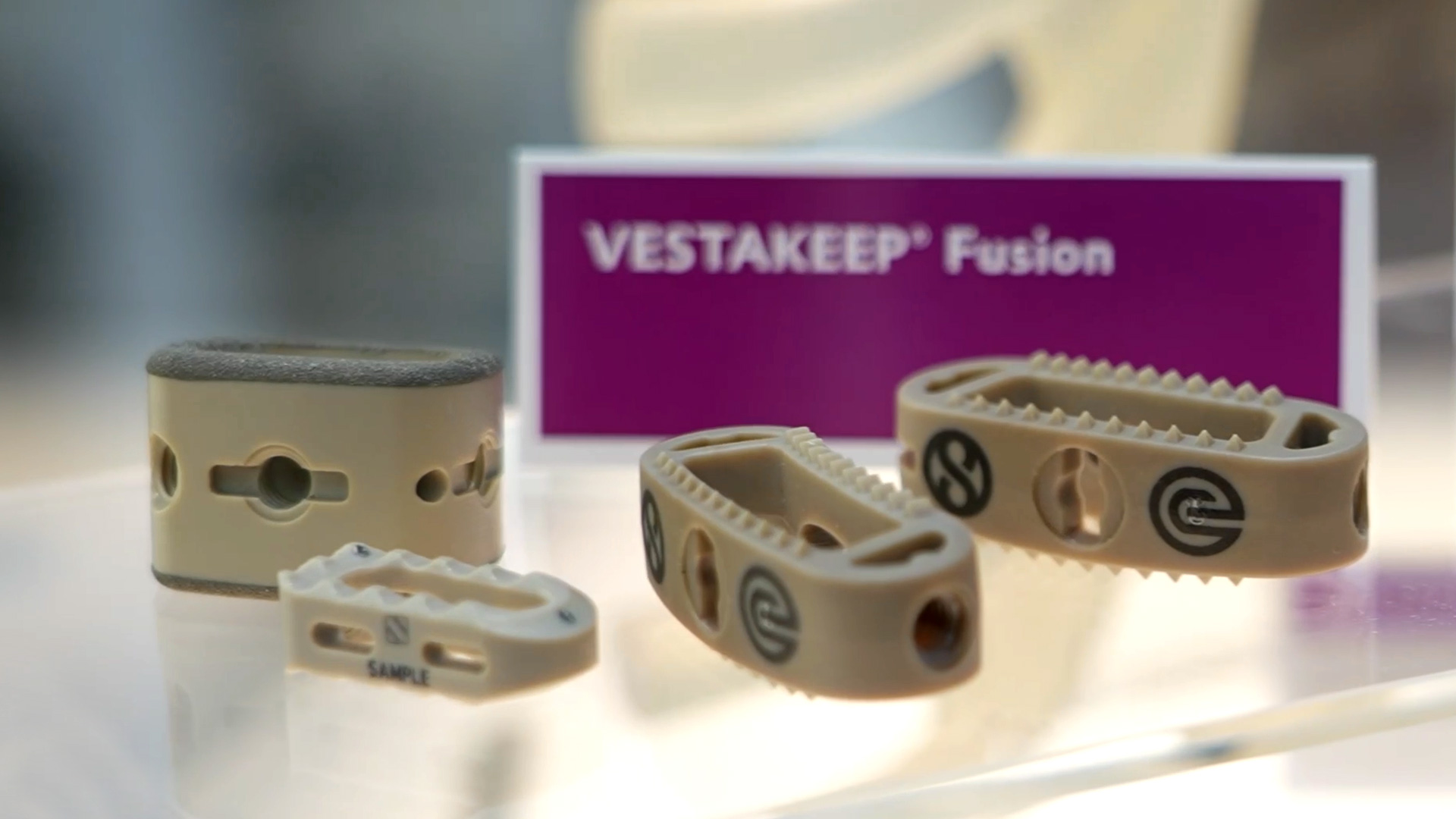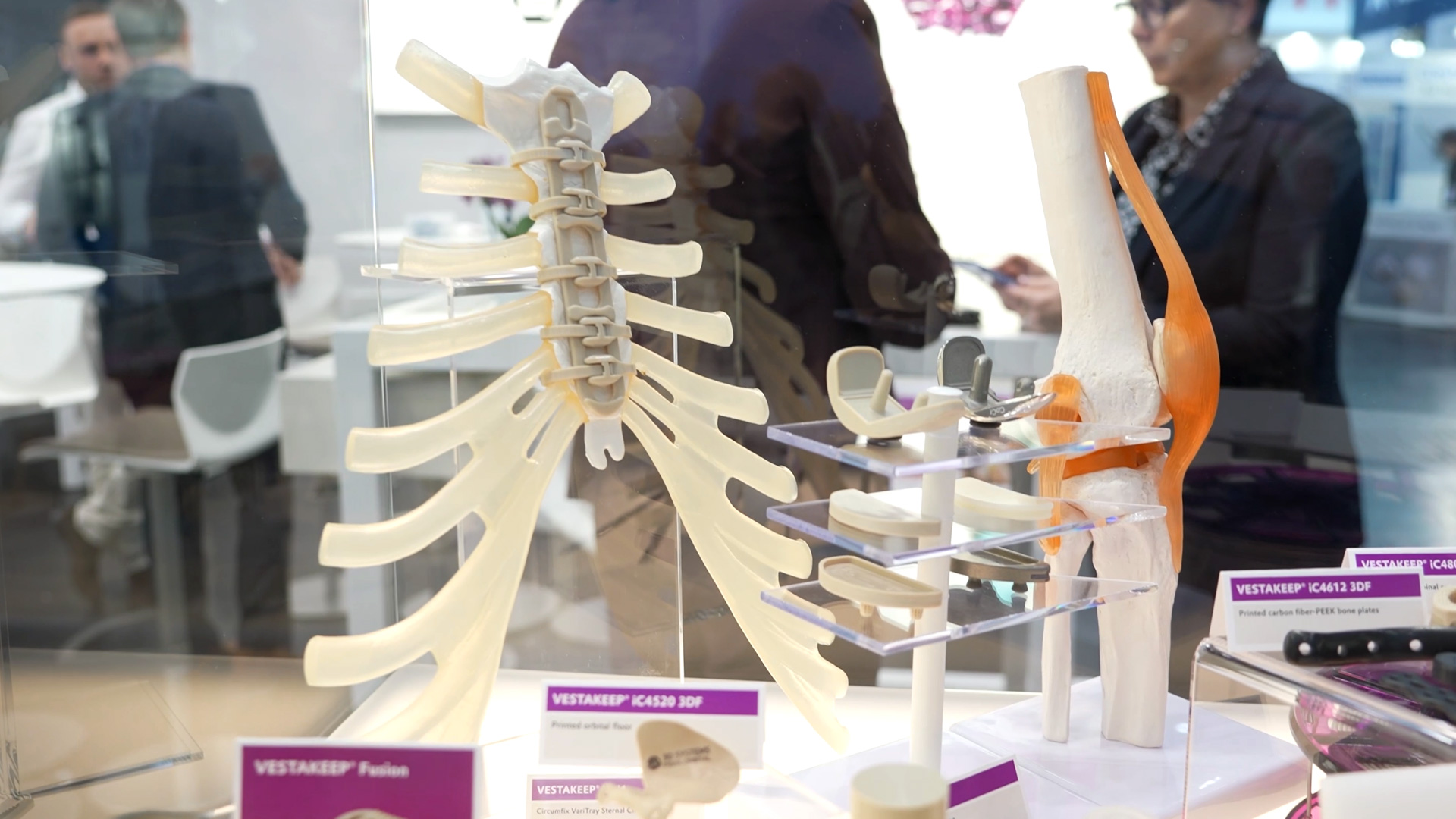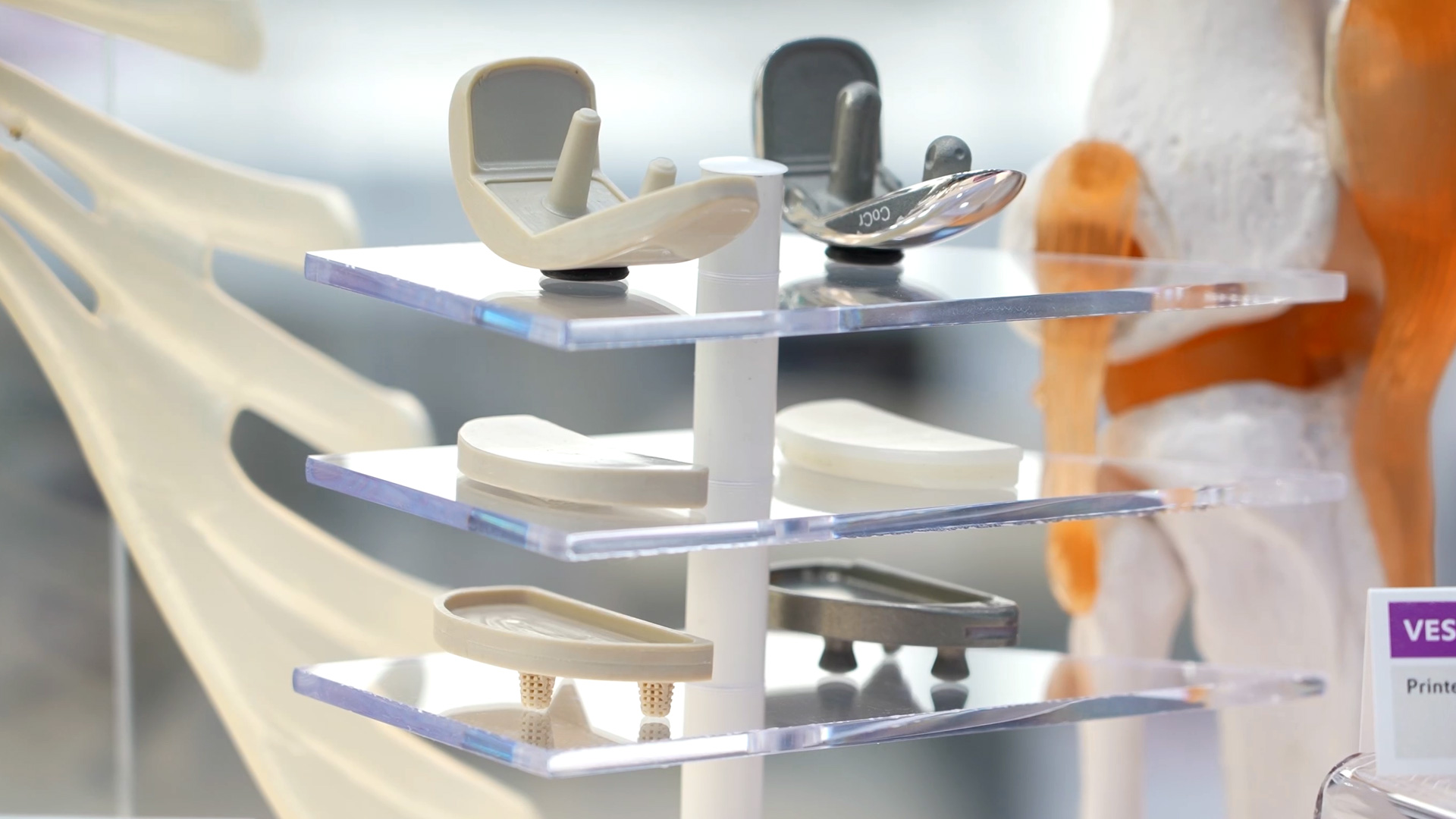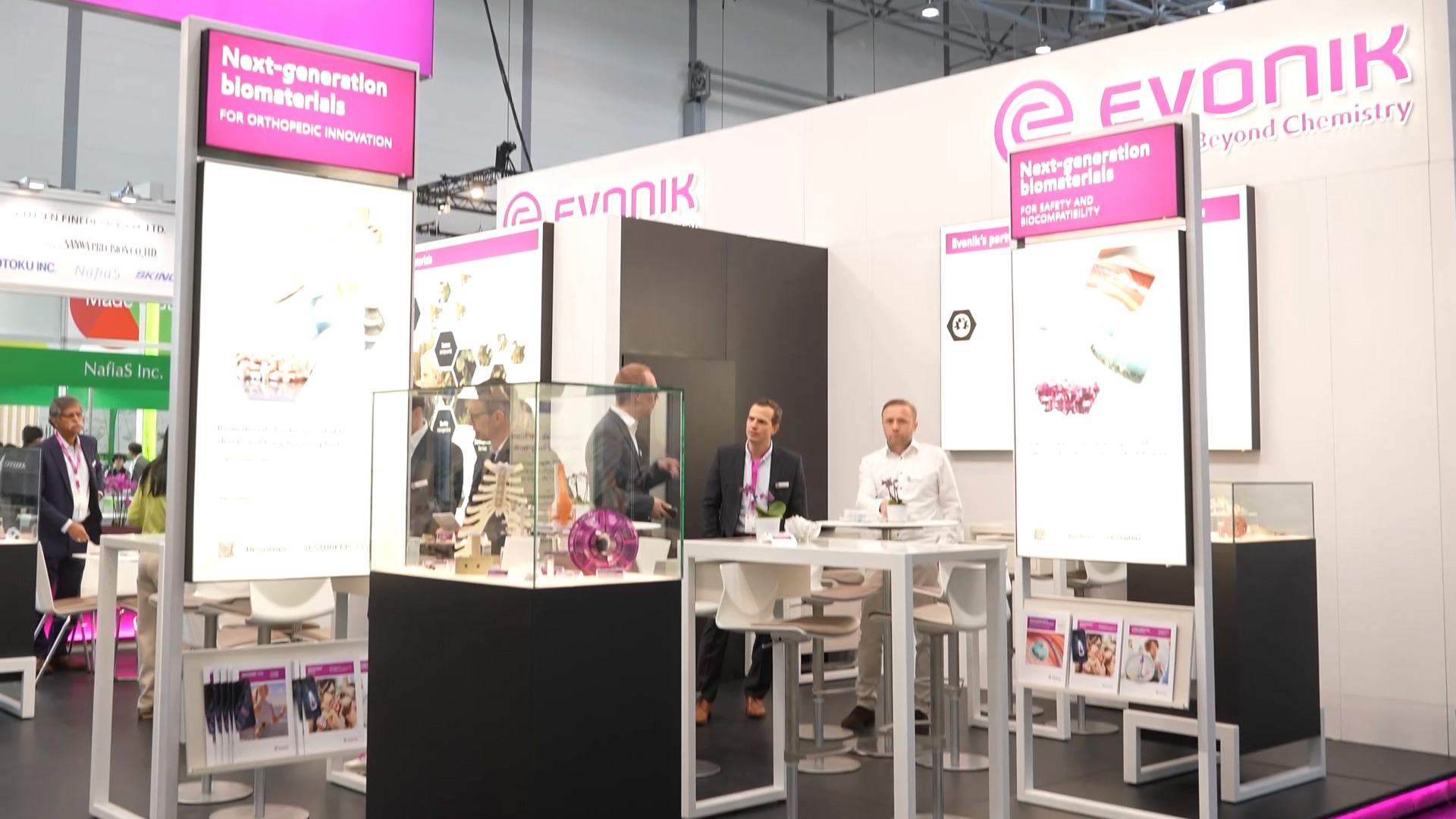At the trade fair, Evonik is showcasing new implantable plastics that can be resorbed or remain permanently in the body, depending on requirements. The portfolio is complemented by a carbon fiber-reinforced PEEK material that can be processed additively for the first time and allows mechanical properties to be specifically controlled.
Evonik produces implantable plastics in both resorbable and permanent forms. They cover a wide range of medical applications and are tailored to the stresses and biological requirements of individual regions of the body. The materials are used in orthopedics, spinal surgery, cranial reconstruction, and cardiovascular systems. Since the materials are developed in-house, their properties can be specifically adapted—from mechanical strength to resorption behavior. Each implant is thus prepared for its future task instead of relying on standard static materials.

A key highlight is a carbon fiber-reinforced PEEK material that has been optimized for additive manufacturing. The material benefits from the well-known biocompatibility of PEEK and gains significantly higher stiffness from the fibers. During 3D printing, the orientation of the fibers can be controlled so that mechanical properties can be specifically placed in the component. This combination opens up design possibilities that would not be achievable with traditional processes. Unfilled PEEK reaches its limits under higher loads, while the reinforced version also reproduces demanding components stably. At the same time, additive manufacturing enables complex structures and load-adapted internal geometries without the need for tools.
PEEK has long been established as an implant material and in many cases replaces metal. Its proximity to bone stiffness ensures balanced force transmission. In areas where additional stability is required—such as bone plates or components that absorb high forces—the carbon fiber-reinforced variant offers significant advantages.

Stiffness can be increased without the typical disadvantages of metal implants. Another example concerns the closure of the sternum after heart surgery. Instead of metal wires, a flexible, cable tie-like system is used, which distributes pressure better and allows patients to have a more comfortable healing phase. The operation time is reduced because the system can be inserted more quickly and does not require subsequent wire adjustment.
In addition to standard solutions, Evonik offers the option of tailoring polymers specifically to medical requirements. Properties such as stiffness, elasticity, surface behavior, and resorption can be adjusted. This flexibility is particularly relevant for implants that need to be adapted to complex anatomical structures or changing loads.

The materials are used throughout the body—in orthopedics, the spine, neurosurgery, and cardiovascular applications such as innovative heart valve systems. The combination of materials expertise and application-oriented development results in solutions that take both functional and clinical requirements into account.
